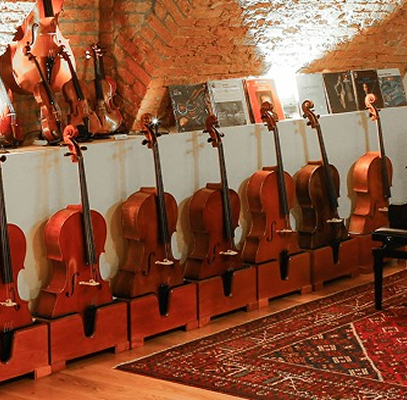Why a Proper Violin Setup is Essential
Back to BlogProper Violin Setup
When it comes to achieving the best performance from your violin, the importance of a good violin setup cannot be overstated. A proper violin setup ensures that your instrument sounds its best and plays comfortably and reliably. Whether you’re a beginner or a professional player, understanding how to achieve a high-quality violin setup is essential for unlocking your violin’s full potential.
Why a Proper Violin Setup is Essential
A well-executed violin setup is fundamental for optimizing your instrument’s sound quality and playability. Just as a car needs precise tuning for peak performance, your violin requires careful adjustments to achieve its full potential. An improperly set-up violin can lead to poor sound quality, uncomfortable playability, and physical strain. Conversely, a proper setup enhances the violin’s tonal qualities, responsiveness, and overall ease of play, making your musical experience more enjoyable and effective.
Core Elements of a Good Violin Setup
To understand the importance of a good violin setup, it’s crucial to know the critical components involved:
String Height
The strings above the fingerboard, known as string height, play a significant role in playability. If the strings are too high, it can be tough to press them down, making the violin challenging to play. Conversely, if they are too low, they may produce a buzzing sound. Proper string height ensures a comfortable playing experience and clear sound.
Sound Post
The sound post is a tiny wooden cylinder located inside the violin, which plays a key role in passing vibrations from the bridge to the instrument’s body. Proper sound post placement affects the violin’s tonal quality, resonance, and volume. An improperly positioned sound post can lead to a weak or uneven sound.
Bridge
The bridge supports the strings and transmits vibrations to the violin’s body. A well-cut and properly positioned bridge is essential for balanced tone and volume across all strings. It should be placed between the F-holes and stand upright with both feet resting fully on the violin’s surface.
String’s angle over the bridge
The lower nut and the neck projection affect the string’s angle over the bridge. Instruments with extreme pressure over the bridge, caused by an acute angle, initially may sound powerful, but with some time, it becomes strangled and without many colors. On the other hand, a setup with strings forming an obtuse angle produces a non expressive and hollow sound.
Tuning Pegs
Tuning pegs are used for initial tuning adjustments. They should fit snugly in their holes to avoid slipping. Properly fitted pegs ensure smooth and accurate tuning of the violin.
The Benefits of a Proper Violin Setup
A proper violin setup offers several benefits that significantly enhance your playing experience:
Improved Sound Quality
With the proper setup, your violin will produce a more resonant and balanced sound. Properly adjusted string height, fine tuners, and sound post contribute to a more straightforward, richer tone.
Enhanced Playability
A well-set-up violin is easier and more comfortable to play. Proper string height, bridge curvature, and fingerboard concavity make playing enjoyable and reduce physical strain.
Increased Reliability
Regular maintenance and setup adjustments help keep your violin in optimal condition, preventing issues such as tuning instability and sound degradation.
Reduced Physical Strain
An accurate setup minimizes the need for excessive force while playing, reducing the risk of injury and making practice sessions more comfortable.
How to Maintain Your Violin’s Setup
Maintaining your violin’s setup involves regular checks and adjustments to ensure optimal performance. Here are a few tips:
Regular Inspections
Periodically check the string height, sound post position, and bridge alignment. Make adjustments as needed to maintain the instrument’s performance.
String Replacement
Strings wear out over time and may need replacement. Regularly changing strings ensures consistent sound quality and playability.
Professional Setup
While minor adjustments can be made at home, having your violin professionally set up by a luthier periodically is advisable. They can make precise adjustments and address any underlying issues.
Conclusion
Understanding the importance of a good violin setup is crucial for achieving the best possible performance from your instrument. You can enhance your violin’s sound quality, playability, and overall reliability by focusing on critical components like string height, bridge, and sound post. Regular maintenance and professional setup ensure that your violin remains in top condition, providing a more enjoyable and practical playing experience whether a beginner or an experienced player; investing in a proper violin setup is a valuable step toward achieving your musical goals.









